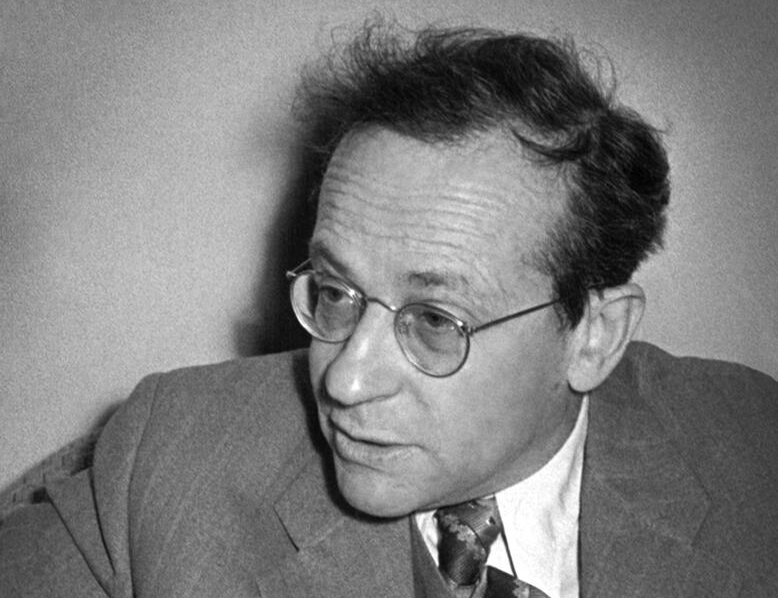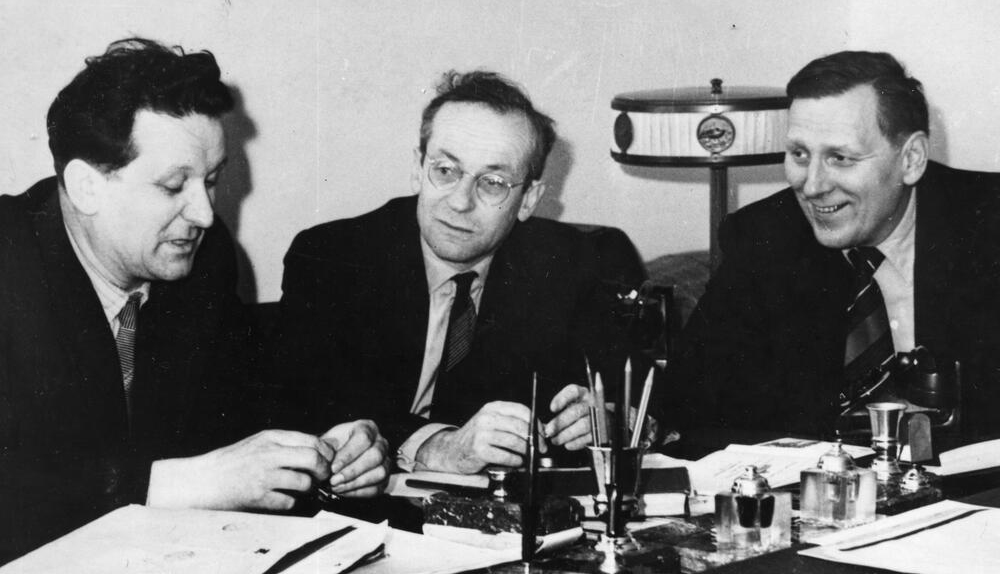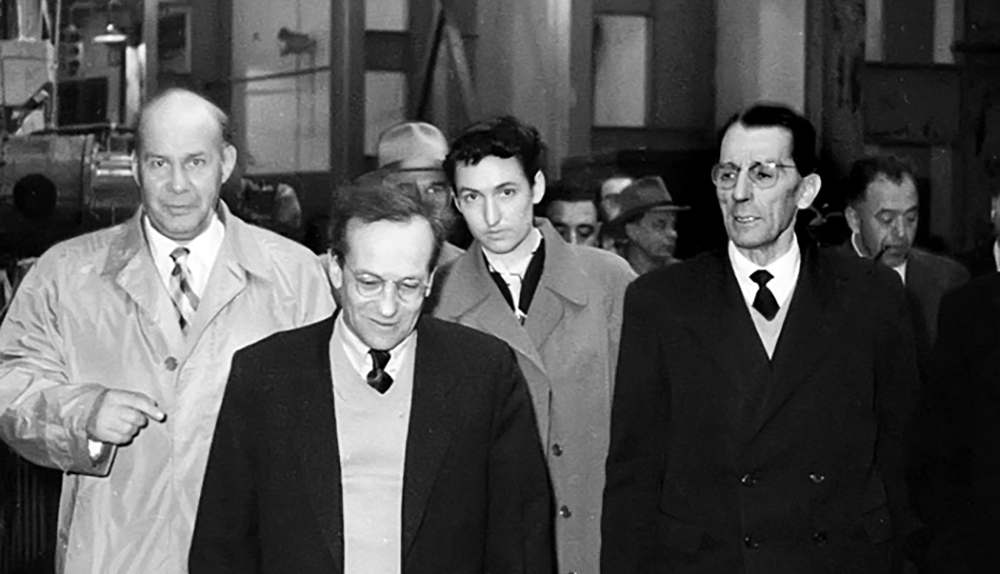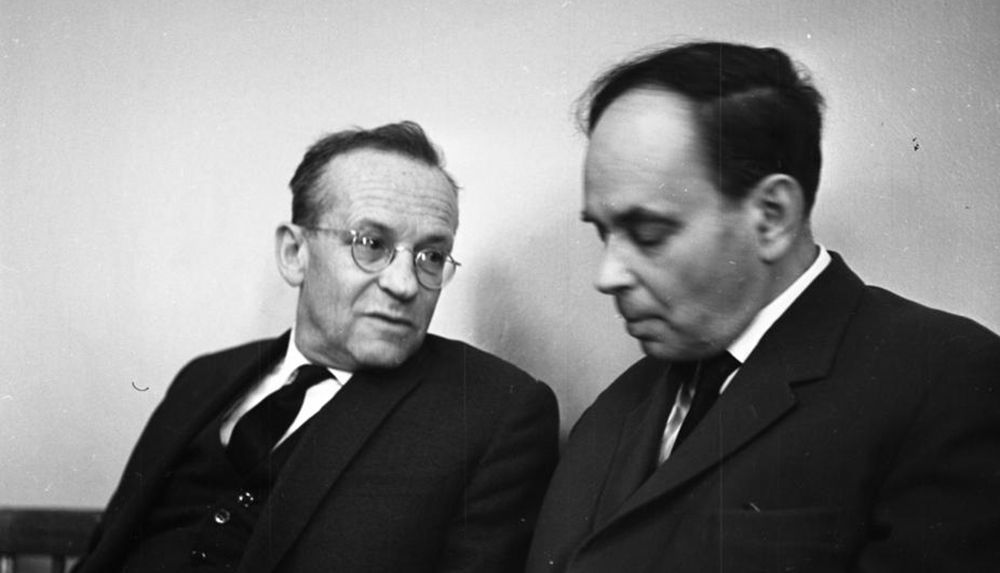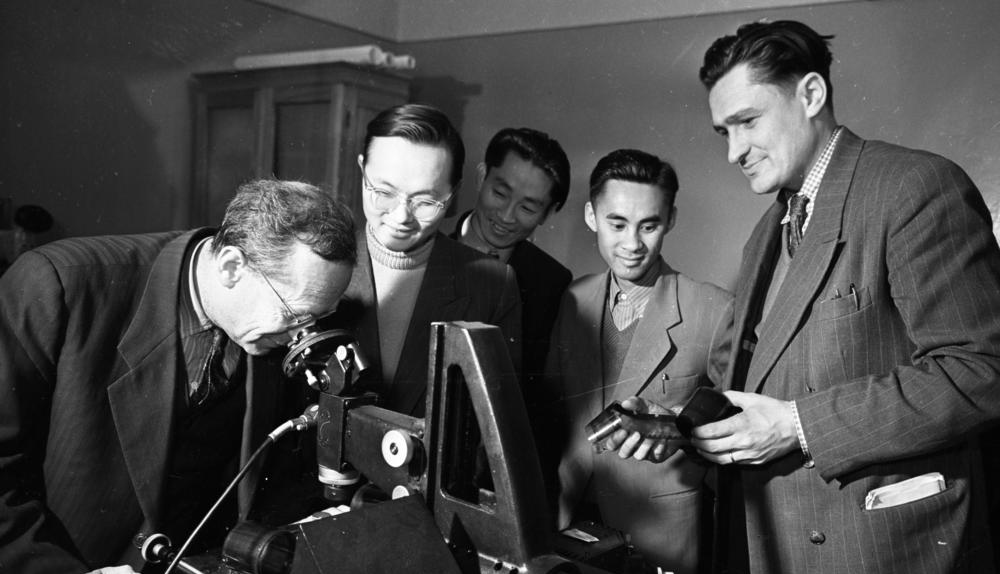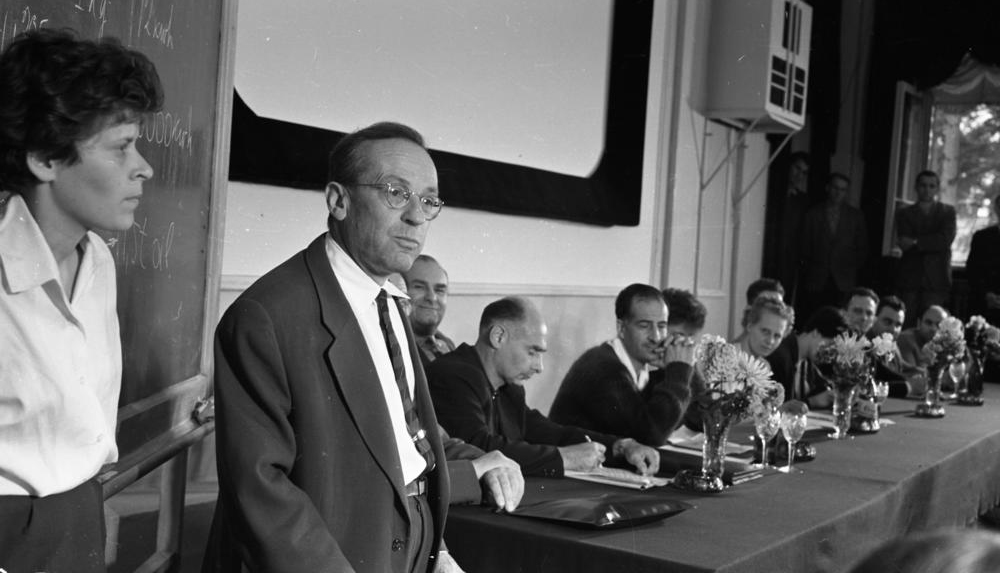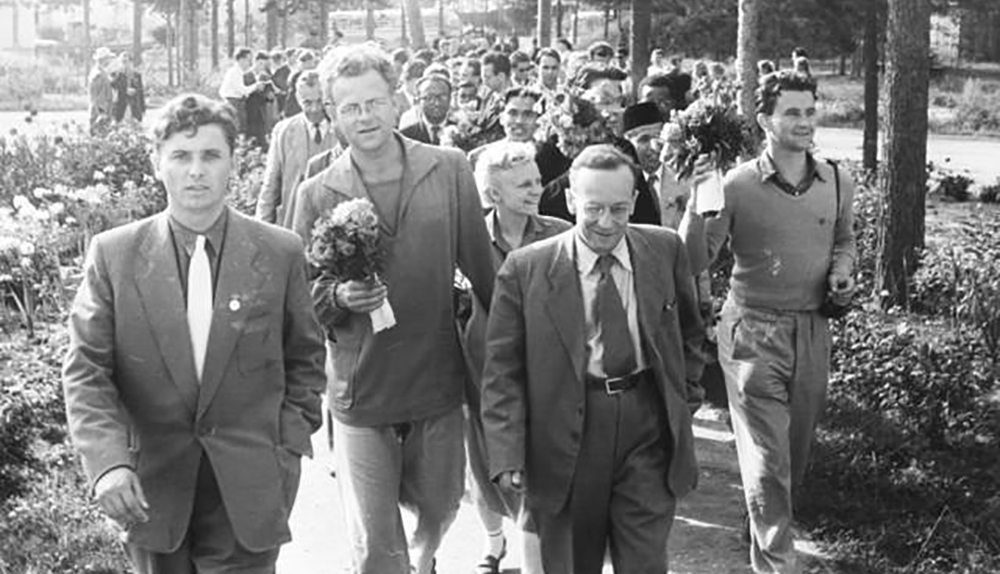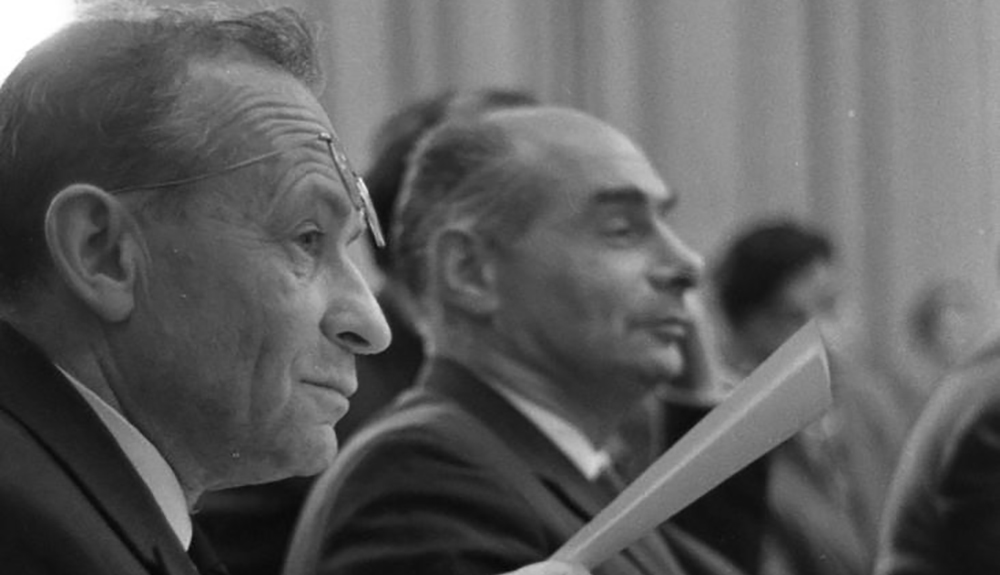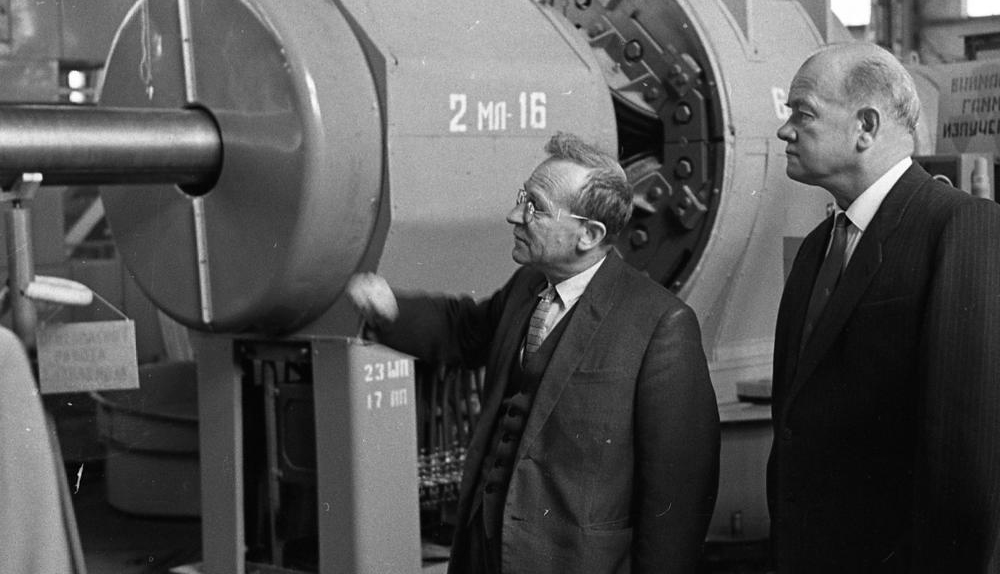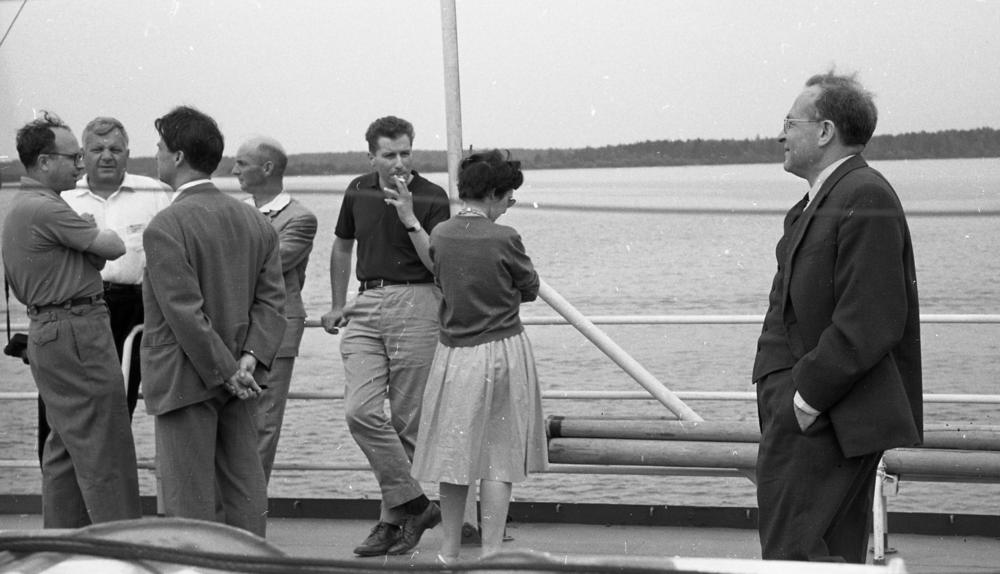Recalling founders: Vladimir Veksler
News, 04 March 2023
4 March is a memorial day of an outstanding experimental physicist, one of the JINR founders, and the first Director of the Laboratory of High Energies JINR, Academician Vladimir Iosifovich Veksler (1907 – 1966). He was one of the founders of accelerator technology in the USSR and creator of the legendary JINR Synchrophasotron (10 GeV).
At the beginning of his career, Veksler discovered the phenomenon of electron-nuclear showers in cosmic rays, i.e. flows of electrons and hadrons formed when a high-energy hadron or lepton enters the atmosphere from space and interacts with nuclei of the gas atoms that make up the air.
In 1944, he received a scientific result that formed the basis for the operation of high-energy cyclic accelerators, the creation of which determined the rapid development of elementary particle physics. Vladimir Veksler invented the microtron and discovered the phase stability principle. Veksler with the participation of Evgenii Feinberg justified this principle theoretically. Then he confirmed it experimentally. In the USA after a year and a half, Edwin McMillan rediscovered the phase stability principle of accelerator technology. Thanks to this achievement, V. I. Veksler was repeatedly nominated for the Nobel Prize. However, he did not receive it due to the secrecy of some information about his work at that time.
In 1947, the first Soviet synchrotron C-3 was constructed led by Veksler at the Lebedev Physical Institute. In 1949, Veksler participated in the preparation for the launch of the first Soviet proton accelerator which operates based on the phase stability principle in the Hydroengineering Laboratory. In 1956 it was changed to the Laboratory of Nuclear Problems JINR.
In the same year, the scientist headed the Laboratory of High Energies JINR. He became the Scientific Leader of the project dedicated to the creation of the JINR Synchrophasotron. It was a proton accelerator for 10 GeV, which was launched in March 1957. The Dubna Synchrophasotron remained the largest in the world for three and a half years after the launch. Veksler became a co-author of the discovery of the antisigma-minus hyperon at the Synchrophasotron in 1960.
Academician Veksler studied the processes of strange particles birth caused by π-mesons. He proposed the principle of coherent particle acceleration, in which the proper fields of charged particle clusters are used for acceleration. In 1956 – 1957, he laid the foundation of collective methods of particle acceleration. Veksler was one of the pioneers of the method of plasma acceleration. He created his own scientific school in the fields of accelerator physics. Veksler’s scientific intuition allowed him, as a science organizer, to accurately identify promising areas of theoretical and experimental research.
Those people who knew Vladimir Iosifovich remember him as energetic, active and tireless. He always seemed younger than he was. Contemporaries noted his boundless devotion to science, commitment to principles, insistence on high standards, combined with high humanity. The team of the first years of the Laboratory of High Energies JINR was recruited mainly from young people who, along with older colleagues, were full participants in scientific discussions initiated by Academician Veksler.
Streets of Dubna, Zhitomir, Odessa, and CERN bear the name of Veksler, as well as the Veksler and Baldin Laboratory of High Energy Physics. The Russian Academy of Sciences established the V. I. Veksler Prize . It is awarded for outstanding work in the field of accelerator physics.
